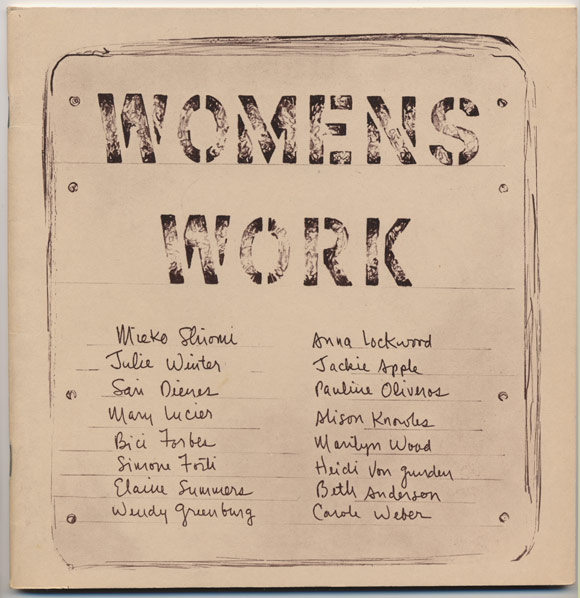
In 1975, Alison Knowles (born 1933), founding member of Fluxus, and experimental composer Annea Lockwood (born 1939) co-edited and self-published Womens Work, a magazine of text-based and instructional scores written by women primarily for music and dance performance. The magazine appeared in two issues between 1975 and 1978. This superb facsimile edition, comprising a book and poster housed in a printed folder, gathers the work from both issues, by artists Beth Anderson, Ruth Anderson, Jackie Apple, Barbara Benary, Sari Dienes, Bici Forbes, Simone Forti, Wendy Greenberg, Heidi Von Gunden, Françoise Janicot, Christina Kubisch, Carol Law, Mary Lucier, Lisa Mikulchik, Pauline Oliveros, Takako Saito, Carolee Schneemann, Mieko Shiomi, Elaine Summers, Carole Weber, Ann Williams, Julie Winter and Marilyn Wood. This is an important reissue, collecting as it does works in a field whose “classics” are typically confined to male-dominated publications.
